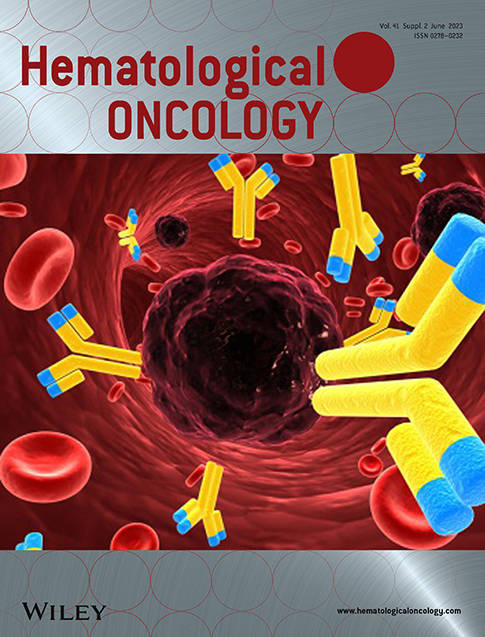Long-term analysis of the RiBVD phase II trial reveals the unfavorable impact of TP53 mutations and hypoalbuminemia in elderly mantle cell lymphoma patients. For the LYSA group.
Introduction: Alterations in TP53 are a well known negative factor in young mantle cell lymphoma (MCL) patients eligible for intensive therapies, but their impact in elderly subjects remains poorly characterized.
Between 2011 and 2012, the LYSA group conducted a phase II trial evaluating the safety and efficacy of 6 cycles of the combination RiBVD (Rituximab, Bendamustine, Velcade and Dexamethasone) without maintenance Rituximab (RM) in patients aged over 65, which allows a median PFS (mPFS) of 5 years to be reached. In this update of the study, we re-examined the classic prognostic factors (PF) for survival by adding the assessment of the mutation status of TP53.
Results: Seventy-four patients (median age 73 years) were treated with the RiBVD combination. The median Progression Free Survival (mPFS) and median Overall Survival (mOS) of the whole population were 62.5 months (5.2 years) and 90 months (7.5 years), respectively. In total, TP53 mutation status was available in 54/74 (73%) patients. TP53 mutations were found in 12 patients (22.2%) (TP53mt). Among the significant prognostic factors in univariate analysis, only TP53mt and an albumin level below 36 g/L (Alb < 36g/L) were independently associated with a shorter PFS in multivariate analysis with an HR of 3.16 (1.3–9.9, p = 0.014) for TP53mt versus TP53wt and 3.6 (1.39–9.5, p = 0.009) for alb < 36 g/L versus alb ≥ 36 g/L. Three PFs were associated with a shorter OS in multivariate analysis; TP53mt, Alb < 36 g/L and ECOG = 2 with HR of, respectively 5.9 (1.77–19.5, p = 0.004), 5.2 (1.46–18.5, p = 0.011) and 3.7 (1.31–10.6, p = 0.014).
Discussion: With a median follow-up of 9.6 years, we confirm the long-term efficacy of RiBVD as first-line treatment of elderly patients with MCL with a median PFS of 5.2 years and an median OS of 7.5 years. We also show that the presence of TP53 mutation and hypoalbuminemia (<36 g/L) are 2 independent PF for PFS and OS in elderly MCL patients included in the cohort. Finally, the TP53 status and the serum albumin allow to discriminate 3 populations of patients according to the presence of 0, 1 or 2 PF with an mPFS of respectively 7.8y, 28 months and 2.5 months.
The research was funded by: ARAMIS association
Keywords: aggressive B-cell non-Hodgkin lymphoma, combination therapies, diagnostic and prognostic biomarkers
No conflicts of interests pertinent to the abstract.





